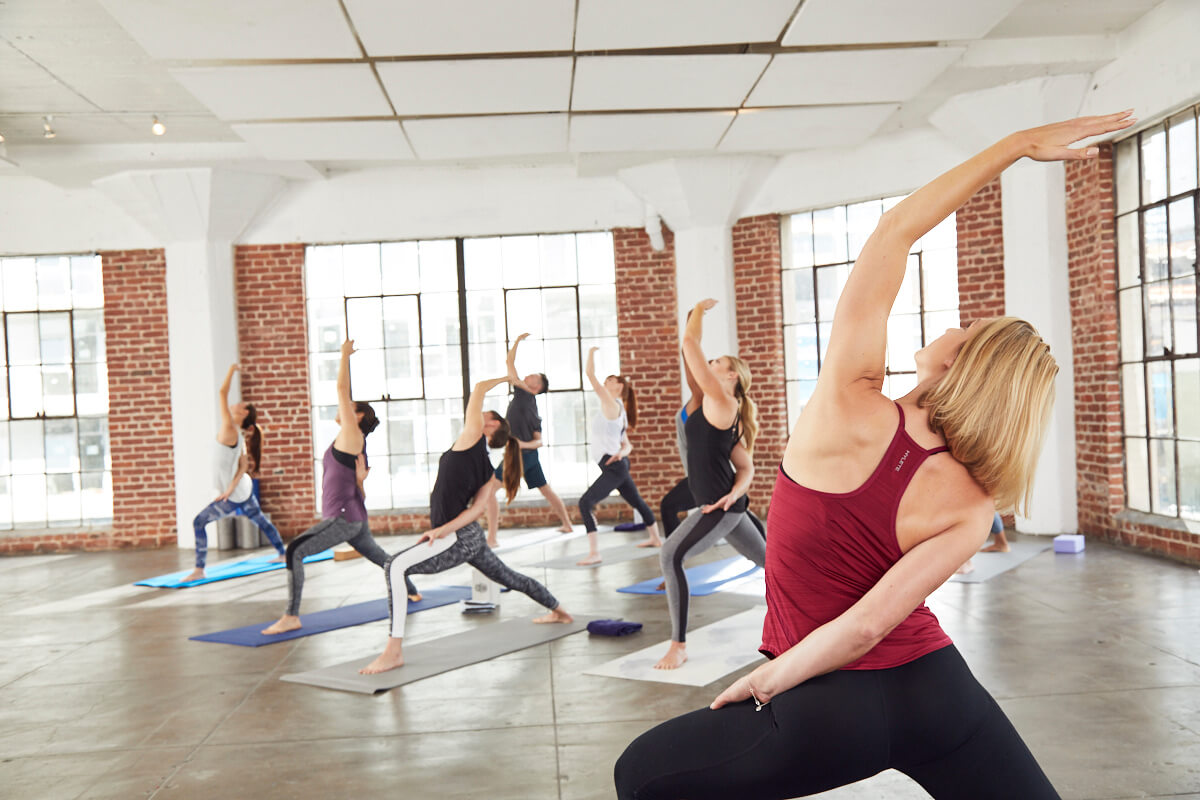
Being distracted is commonly regarded as something to avoid.
Distractions during a presentation at work can quickly derail our train of thought and negate all our hard work and preparation.
When a friend tells us about their day, we want to be a good listener and not allow ourselves to be distracted by an internal dialogue that interferes with our ability to engage in the conversation.
When it comes to group fitness, however, distractions can be a positive and powerful tool to help our clients enjoy their workouts while exercising harder and for longer durations of time.
What is “strategic distraction” in exercise?
Strategic distraction during exercise should be thoughtfully planned for participant safety.
When done correctly, strategic distraction redirects attention from a stressor (e.g., the “burn” of an exercise) to thoughts independent of the stressor (e.g., a fun and engaging combination of exercises).
Outside of the gym, positive strategic distraction may come in the form of a doctor asking us to “pull our hands apart” as they test the reflexes in our knees or as an “airplane” delivering a spoonful of mashed peas to a fussy 1-year old.
At the gym, members choose to be strategically distracted as they exercise on their own when they listen to music while lifting weights or watch the news on the treadmill’s television screen while completing their distance run for that day.
In group fitness classes, instructors can incorporate safe and positive distraction strategies to maximize class efficacy, enjoyment and adherence in just a few simple, thoughtful steps
The benefits of strategic distraction in exercise
Volume (increased reps)
When it comes to achieving our fitness and health goals, volume matters. A high exercise volume can be achieved by increasing the amount of time spent exercising and/or the intensity of the exercises being performed.
In both scenarios, strategic distraction can help by allowing time to feel as if it is passing more quickly and/or by decreasing perceptions of difficulty.
In a group fitness class, an example of positive strategic distraction might be playing an incredibly motivating song that features the lyrics “I am a warrior” while class participants perform burpees.
Thanks to the song’s perfectly chosen rhythm, tempo and lyrics, those sets of 10 burpees may feel a little more like six.
If participants are motivated to exercise at greater intensities and/or for longer durations, they are more likely to achieve their fitness goals and, consequently, maintain their long-term commitment to exercise.
Enjoyment
We know that enjoyment is one of the most influential factors of exercise adherence.
A thoughtfully planned class, complete with safe exercise progressions, purposeful transitions, and an exciting soundtrack is, in general, much more enjoyable than a class of random exercises and awkward transitions set to inappropriate music that features demotivating lyrics, confusing rhythms or ill-timed tempos.
If class programming, pacing, transitions and playlists are thoughtfully planned, an exerciser’s experience is more likely to be one that they’ll look forward to week after week.
How to use “strategic distraction” in your group fitness classes
1. Create an Experience
As soon as participants walk through the door to enter a group fitness class, there should be a noticeable shift in mood and energy.
This can be accomplished by arranging class equipment, setting music to play, and changing the room's lighting (e.g. dimming the lights slightly, hanging string lights or plugging in party lights) all before the first participant arrives.
When the room is set successfully, class participants feel as if they’ve left the ‘real world’ behind, freeing up mental, emotional and physical energy that can be put towards their exercise efforts.
2. Curate a Playlist
When taught by similarly skilled instructors, music is oftentimes the only thing that differentiates a sold-out class from a class cancelled due to low attendance.
The songs selected, as well as their order, should take class participants on a journey, telling an inspiring and captivating story from start to finish.
A clear, inspirational message featured early in a class playlist can help shift any focus left lingering on the day’s previous events or on tasks that remain unfinished.
Music should mirror the physiological demands of class to match the efforts and focus of our participants (i.e., the energy of a high-intensity peak or a prolonged endurance interval).
A warm up should feature a distinct sound that builds as exercises progress in intensity and range of motion, while a cool down should feature a slow, deliberate sound that encourages participants to decrease their efforts, slow their breathing and reflect on their incredible accomplishments.
In between the warm up and cool down, a curated playlist will complement exercise progressions and speed while motivating participants to try their hardest.
3. Exercise Selection and Progressions
First and foremost, the selection of exercises should be based on principles of exercise science and safety. Exercises should be purposeful and promote the overall fitness goals of the class.
Song selections can help guide exercise choices just as exercises can help instructors choose the best song.
A great tip for pairing songs and exercises is to physically perform exercise progressions with their selected song(s) before teaching them in a live class.
An exercise progression may feel like a great choice while sitting at a computer listening to the song, but there is no way to be 100% confident of a pairing’s safety and success until it has been physically practiced.
4. Transitions Between Exercises
Transitions between exercises and songs should be given the same amount of time and planning as the rest of class.
With an understanding of participants’ varying experiences and abilities, instructors should be able to best predict the amount of time needed for the safest and most appropriate transitions between exercises, specifically those that transition from a standing position to one that is supine or prone.
Too many abrupt or awkward transitions disrupt the flow of class and may create negative experiences.
5. Mix It Up
Identify the optimal room orientation – where participants can access equipment, see and hear you easily, and move safely – and then set your class to face that direction for most of the class.
When safe to do so, however, experiment by having participants turn to face the back for an exercise or two or even face toward one another. Partner and small group exercises are another option to mix things up in group fitness classes.
Team-oriented exercises provide participants opportunities to work together, promoting community and building relationships that not only help hold participants accountable to their fitness goals but also extend beyond the walls of the group fitness studio.

